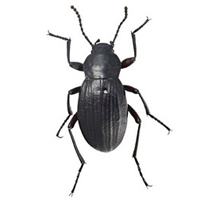Community structure of tenebrionid beetles in the Ulan Buh Desert (Inner Mongolia, China) (Coleoptera: Tenebrionidae)
DOI:
https://doi.org/10.13133/2284-4880/380Keywords:
arid ecosystems, Asia, Community ecology, Diversity, Gobi DesertAbstract
Tenebrionids are a conspicuous faunal component of Central Asian deserts, but little is known about their community ecology. We investigated how tenebrionid community structure varied along a vegetational gradient in the Ulan Buh Desert (Gobi Desert). Sampling was done with pitfall traps in three sites with different vegetation cover. Species abundance distributions were fitted by the geometric series model, which expresses the “niche pre-emption” hypothesis. Community structure was investigated using different measures of diversity (number of species, Margaleff richness and Shannon-Weaner index), dominance (Simpson and Berger-Parker indexes) and evenness (Pielou’s index). The observed tenebrionid species richness was similar to that known from other Gobi Desert sites. The three investigated sites have similar species-abundance patterns, but the most dominant species varied among them. This suggests that the local environment operates a filtering action on the same basic fauna, allowing different species to dominate under different conditions. Overall, the highest total abundance was observed in the true desert site, however this site had a community structure similar to that observed in the site with more vegetation. By contrast, the investigated site with intermediate conditions showed a higher diversity and evenness, and a lower dominance. Thus, intermediate conditions of plant cover favour tenebrionid diversity, whereas a dense cover or a very sparse cover increases the dominance.
Downloads





